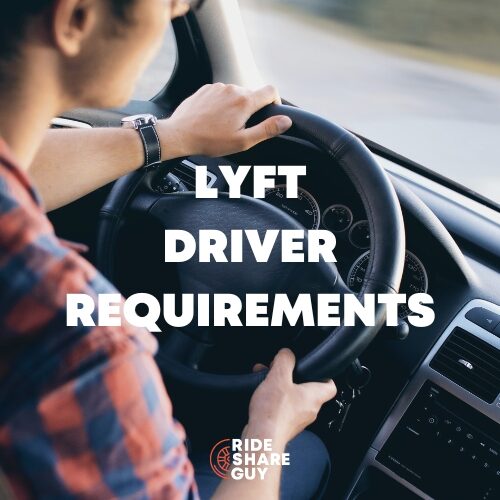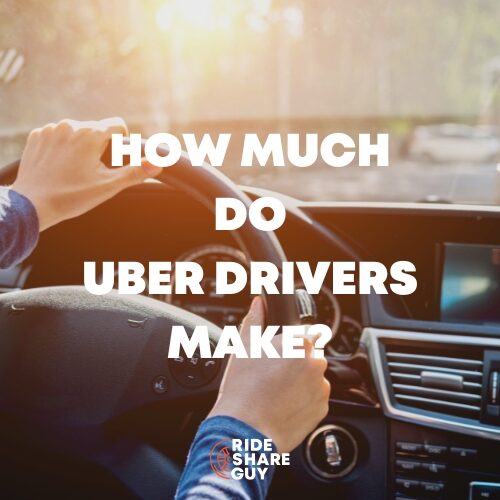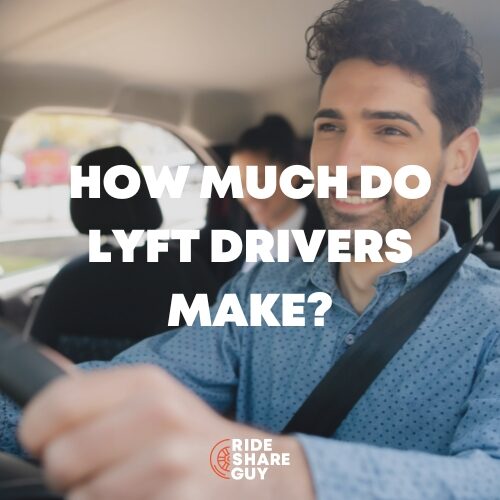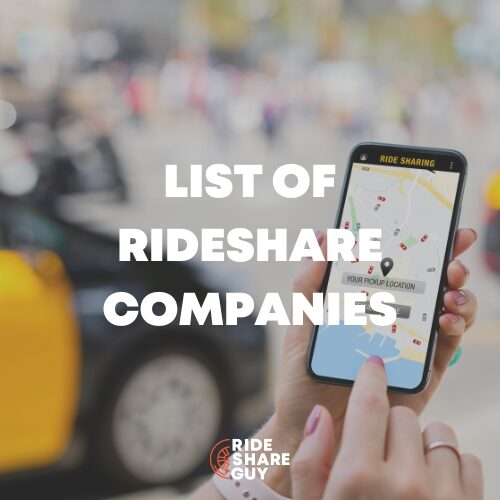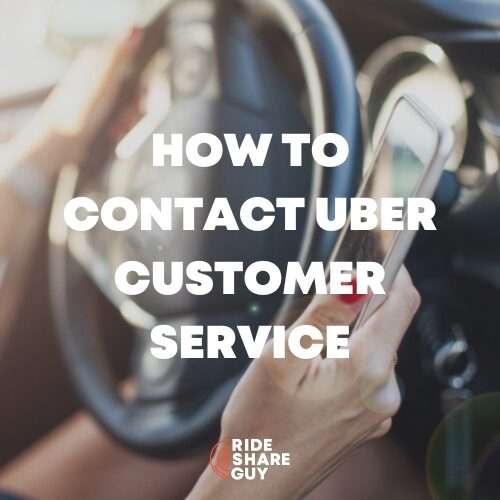Earlier this year, we reported on a new Uber program where drivers could set their own rates at certain airports.
This was one of a handful of new features released by Uber in California in response to AB5, and many drivers wondered when this new feature would roll out to more airports.
This July, we got our answer: Uber is rolling out this feature statewide to many California drivers on every single ride – not just those picking up at airports.
Below, we’ll share with you the details of this new feature release as well as some considerations each driver should have before tinkering with rates. And if you’re in a state outside of California, we’ll let you know why you should care about this change!
At The Rideshare Guy, we strive to break all the latest rideshare news down for you FIRST so all you have to do is sit back and drive. If you want to stay informed and up to date, sign up today to get The Rideshare Guy newsletter here.
Quick summary:
- Drivers in certain cities in California will be able to set their own rates for trips, or remain on ‘auto-pricing’
- Designed to give drivers more independence and combat AB5
- While only in California for now, this feature could roll out to more states as states try to implement their own versions of AB5
Watch our video analysis below or here: Uber Drivers Can Set Their Own Rates in California
Background on How This Set Your Own Rates Feature Came to Be
Uber is not a fan of AB5 and since the law went into effect on January 1, Uber has been coming out with driver features that are designed to give California drivers more flexibility and bolster their case that drivers are independent contractors.
For example, drivers can now see the destination and expected commission of a ride at the ping in California.
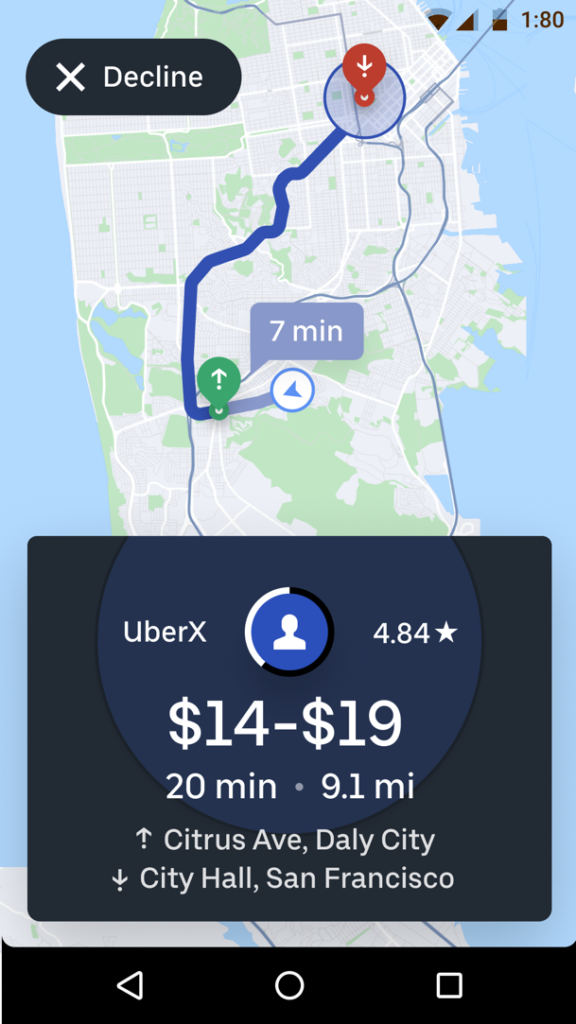
It was not always like that. It used to be we would have to drive to the passenger, wait for the passenger to get in the car, then start the ride, and only then would we see where we were going. Thank you, AB5!
However, in order to be a true independent contractor, as compared to an employee, one must be able to set their own prices. This is Uber’s attempt to meet these criteria.
It will be up to you to decide if you want to change your pricing and be a complete independent contractor.
Timing of the New Feature
According to Uber, here are the release dates:
“Starting July 6, we’re providing drivers in LA and the surrounding areas [as well as the current locations in Bakersfield, San Diego, Sacramento, and Fresno] the option to set their own fares for trips, as a multiple of time and distance rates. This feature is designed to further increase drivers’ flexibility and protect access to independent work.
“In the coming weeks, drivers in San Francisco will be able to set their own fare. We will monitor feedback regarding how well the new feature is working. We’ll use this information to continue making product improvements in the months ahead, so that we can build on our commitment to flexibility and protect the independence of drivers like you.”
The Uber spokesperson I spoke to said San Francisco will go online within two weeks.
Bottom line, if you are in California and you don’t already have this feature, you may within two weeks, especially if you are in Bakersfield, San Diego, Sacramento, Los Angeles and San Francisco.
Using “Auto-Pricing”
It all starts with the Auto-Pricing toggle switch found under Driving Preferences. If you don’t want to do anything different than what we now consider normal, then you would leave Auto-Pricing on.
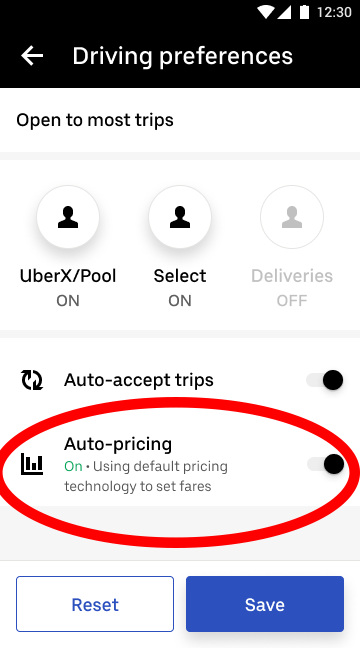
As a result, you will get normal “default” fares. When there is surge in any given area and you get a ride, you will get paid the extra surge commission just as you have in the past.
To keep it simple, if you want to keep things the same as they are now, keep Auto-Pricing set to On.
The Fare Multiplier: Set Your Own Rates
Here is where it gets interesting. If you turn your Auto-Pricing off, then you can create some different guidelines for your passenger’s fare.
Let’s look at the feature:
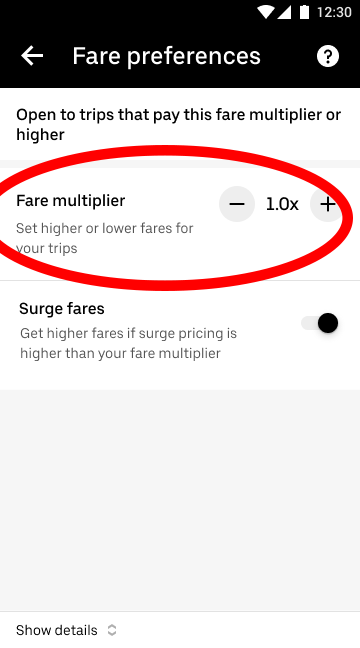 The Fare Multiplier allows you to set a passenger’s fare, and then your commission, as a multiple of the default fare. You can set the value as low as .5X of the default fare, all the way up to 5X.
The Fare Multiplier allows you to set a passenger’s fare, and then your commission, as a multiple of the default fare. You can set the value as low as .5X of the default fare, all the way up to 5X.
You can set it in increments of .1X. For example, let’s say you want to get a ride at 2X the current default fare.
To make this as real and instructive as possible, let’s say you are driving in the downtown of a city. If a passenger would normally pay $20 to get to the airport, then in order to ride with you, the passenger would pay $40.
That sounds great. However, we don’t always know how Uber determines who is going to get offered that ride. For example, if two drivers are equidistant to the passenger, then the lower-priced driver will get the fare.
However, if there is a difference in the ETA (estimated time of arrival), then we don’t know who will get the ride. Does Uber put more value on the shorter ETA or the lower price?
When I asked Uber who would get the ride in this scenario, they told me that it would be up the algorithm, which takes into account many factors, the two most important being ETA and price. My bet is that another driver would have to be pretty far away before you would get the ride at 2X. We won’t really know until we get out there and drive and experiment with the feature
But wait, there is more to this story. Whenever the passenger gets a driver with a fare higher than the default, the passenger has 20 seconds to decline that ride.
Back to our scenario. You just got the ping. That would be great news because it is at 2X.
You start to make your way over to the passenger, and then you see the passenger canceled on you and you are back to square one. So as a driver, you may want to wait for 20 seconds and make sure your passenger has accepted before you head on over to your pick up destination.
If I was a passenger, and I saw that my ride was going to cost twice as much, I think I would cancel as well and wait for a normal fare.
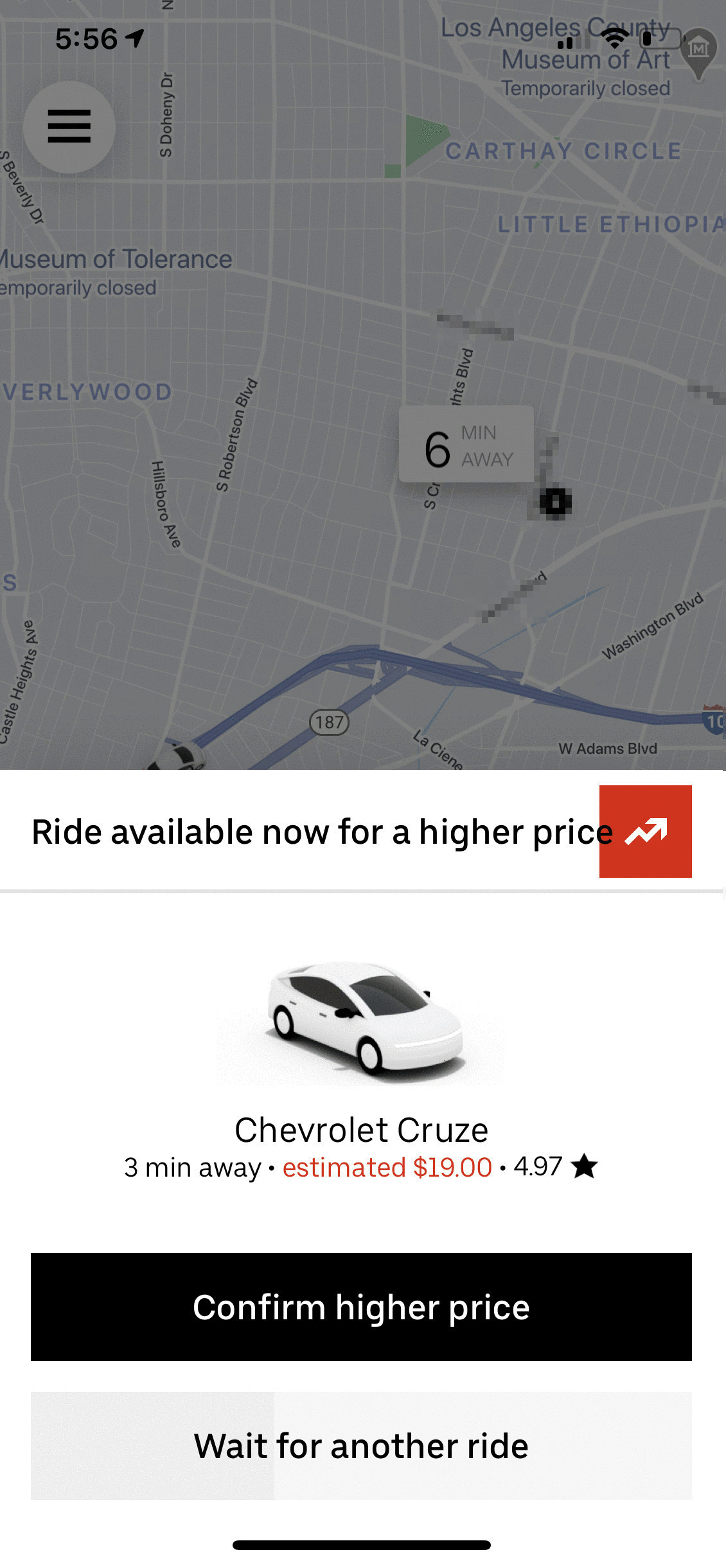
Harry tested out this feature briefly from the passenger side while out running errands and the initial quoted fare was $13, but then got two offers for $19 and $24! He declined both and eventually got a driver a little farther away for $13.
It was definitely a lot more friction than the normal process so I’ll be surprised to see what passengers think of this feature. I doubt they’ll like it at first because they’re being asked to pay more, but will they get used to it? Like with upfront pricing, tipping, etc. I’m not so sure.
Opting Into Surge Fares
This is another feature for you. Drivers now have some control over surge fares.
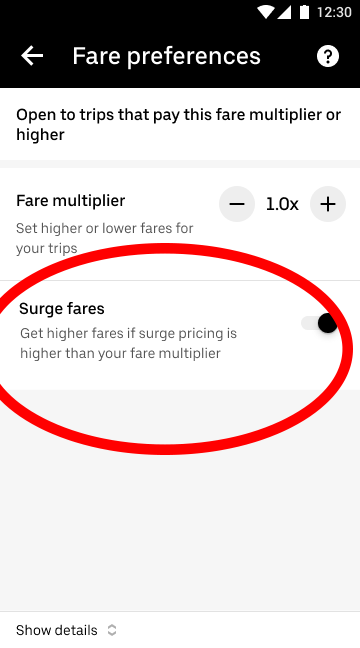 Sticking with our scenario, let’s say you are set to 2X, but the market demand has heated up and the default surge is now 3X.
Sticking with our scenario, let’s say you are set to 2X, but the market demand has heated up and the default surge is now 3X.
If you toggle the Surge Fares feature to ON, you will get the higher of the two. In this case, your next ride would be at 3X.
If you did not toggle it, you would be priced less than the other drivers, which should get you a ride quicker. Again, we are not sure because we don’t know exactly how the algorithm works but in general the closer you are and the cheaper you are, the more likely you are to get a ride.
The image below shows you how Uber will remind you if you can get a higher surge value – this is a nice add by Uber as it makes it seem like they’re encouraging drivers to get the highest amount for their time:
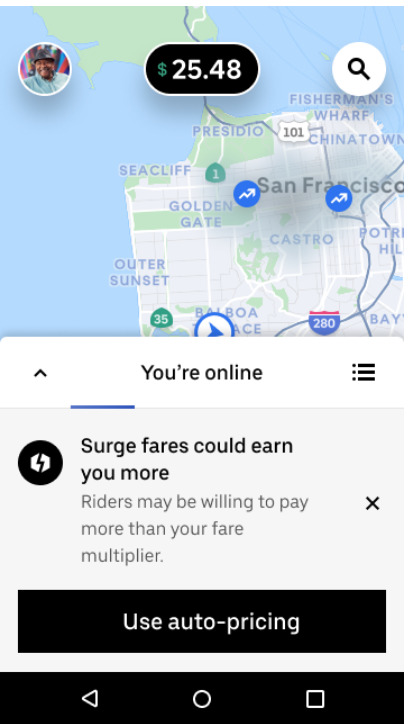 What This Means for Drivers
What This Means for Drivers
With Uber’s new feature, we can play with pricing in a variety of ways. However, we are still navigating within Uber’s rules. And, unfortunately, we don’t know exactly how that algorithm works when it comes to ETA and pricing, so it makes it difficult to figure out the most profitable way to work the system. You will have to try things out in your market and see what works and what does not work.
Earlier today, I spoke with a driver named Gary who has been using this feature in Bakersfield for the past two weeks. His strategy has been to set the multiplier at 1.2X, and he has been getting rides at his normal pace. Therefore, he has seen a 20% increase in his take-home pay.
His passengers have told him that many drivers are charging 2X and 3X for rides. Therefore, for the time being, Gary’s fare at 1.2X is a good one relative to the competition. He told me he has had 75 fares accepted and only 2 rejected by passengers.
My concern remains that this new feature will ultimately lead to a race to the bottom. Those drivers who are charging 2X and not getting as many rides will eventually lower their rates so they can earn more revenue.
This downward trend could continue until the fares drop below the default rate. At that point, we will all have seen a pay cut. This is all conjecture at this point as this is a new feature, very few drivers have tested it out, and all bets are off as we are in the very unique situation of a Covid19 pandemic. Let’s give it some time.
As far as drivers outside of California, an announcement like this is in response to what’s going on with AB5.
However, other states are watching California closely, and depending on how everything with AB5 and the employee vs. independent contractor debate shakes out, Uber may choose to roll this out to more states if they’re worried about similar legislation.
Key Takeaways
Uber is really trying to make drivers feel like true independent contractors. In my conversation with Uber about this new feature, they explained that drivers want more flexibility – which is what this feature offers.
This is a big change for California drivers, and Uber should be applauded for at least trying to figure something out which will increase driver satisfaction, while also bolstering their argument against AB5.
I had to ask myself if this new feature really does add flexibility? Or does it add a new layer of complexity to an already complex situation?
I will let you be the judge of that. Besides, the real question is: Will this new feature put more money into drivers’ pockets?
Our driver friend Gary in Bakersfield is seeing some early success. However, that may be short-lived once the other drivers catch on to what’s happening.
I’ll keep an open mind and wait to hear from more drivers.
Regardless, this feature will definitely make Uber driving a bit more interesting. The game now has a few more pivot points. Be safe out there.
Drivers, what do you think about the ‘set your own price’ feature from Uber? Would you like to see it come to your city (if you don’t live in California)? Do you think it will have a positive impact on driver earnings?
-Jay @ RSG
